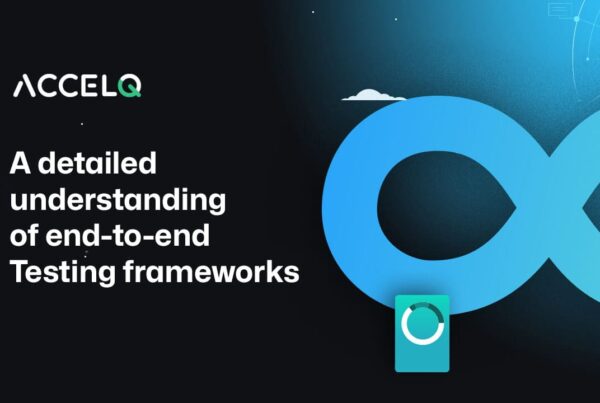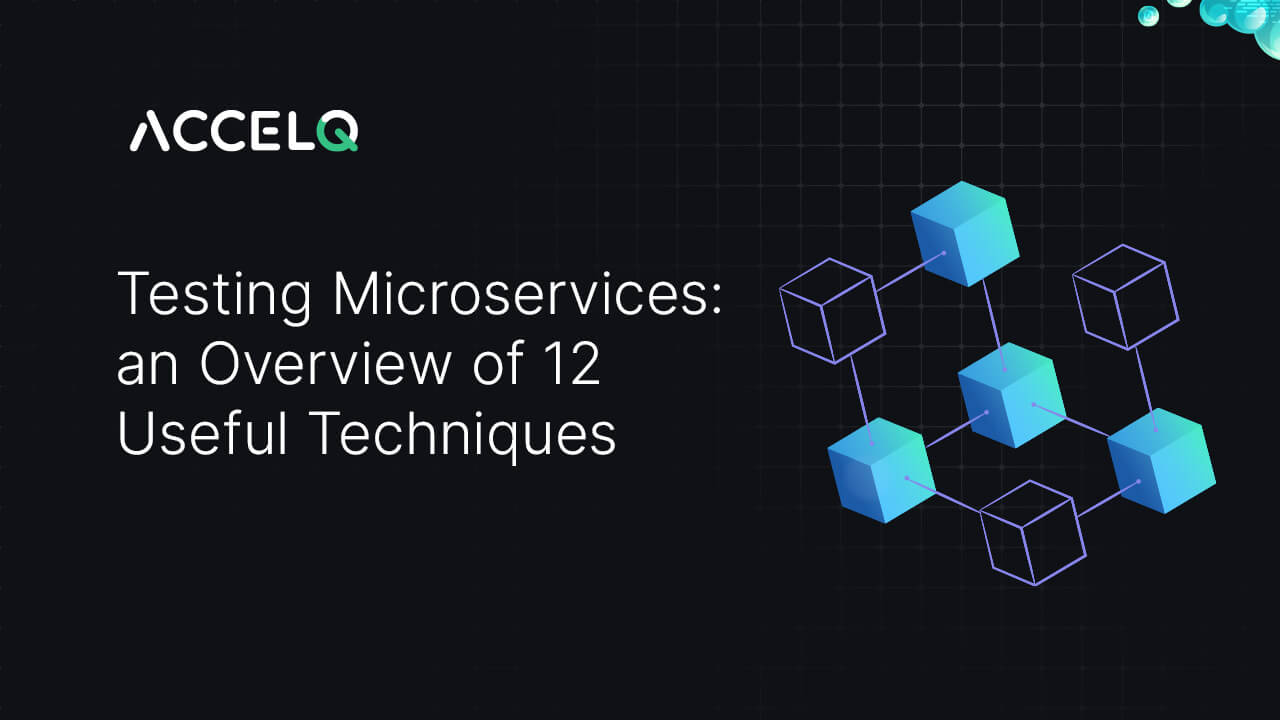Testing Microservices – The Top Useful Techniques

Traditional QA testing techniques are no longer useful in the domain of microservices-based applications and container-driven infrastructure. The microservices architecture is less dependent on individual components and more dependent on remote dependencies. QA and testing environments must adapt to this new reality.
So, without any further ado, here’s everything you need to know about testing microservices.
What Is Microservices Testing?

Effectively, any microservices-based application is a collection of independent services that use APIs to communicate with each other. Furthermore, every microservice has independent deployment and data storage.
Microservices testing is the combination of QA testing activities to check the overall performance and functioning of each microservice. In essence, the microservices testing strategy must include the following:
- Types of microservices testing (for instance, performance testing and regression testing)
- Microservices testing team comprising QA managers, QA manual and test automation professionals, and the test automation architect.
Organizations must adopt a microservices testing strategy that can:
- Test each microservice independently
- Test all the microservices together
- Check for any service dependencies
This means QA teams must spend more time and effort in testing the connections and contracts between the various microservices. Depending on the available cost and time-to-market, organizations can choose from a host of microservices testing techniques.
Let’s profoundly explore these techniques in the next section.
Useful Techniques in Microservices Testing
Overall, most organizations deploy their microservices in container-based environments like Docker. Hence, QA teams use a wider variety of techniques for testing microservices. For instance, microservices testing teams do not necessarily need to test components together (as is in monolith applications). Instead, they can divide and test individual application modules or components.
To that end, here are some of the useful techniques used in testing microservices:
1. Using Test Dependencies
Instead of test doubles, a microservices testing environment can use real test dependencies. For instance, here are some scenarios of how microservices communicate in any test environment:
- Test a microservice using the test instance of another microservice.
- Test a microservice using the production instance of another microservice.
- Test a microservice with third-party dependencies (or the production instance of a third-party system).
- Test a microservice using legacy-based non-microservice dependencies. For example, a running test instance of a mainframe system.
- Test a microservice using hardware dependencies. For instance, by connecting it to a hardware device required to complete the service.
2. Unit Testing
In this type of testing, QA teams can check the performance of each unit (or component) of the microservices-based application. Depending on the product complexity, a unit can mean a single object, module, function, or method. This technique is suited to test smaller units in the microservice.
Typically, application developers must perform unit testing during the product development phase. Nevertheless, QA teams can execute unit testing later to check each component of the microservice architecture.
3. Contract Testing
Contract testing is crucial for testing loosely coupled microservice components. This technique ensures all components are communicating efficiently. A contract defines the result expected for a specific input. Every service call must meet the defined contract even after modifying the service.
Contract testing checks every service independently and, accordingly, verifies their responses. In the case of any service dependencies, services must behave as a stub, which enables a service to function without interacting with other services.
4. Integration Testing
Integration testing is necessary to test microservices together as a complete system. This ensures that microservices are efficiently working and collaborating during execution. Using integration testing, QA teams can design communication paths and identify any incorrect assumptions in each microservice.
Integration testing is also effective in testing interactions of microservices with external tools or components. For example, it can verify if the data cache integrates properly with external data sources.
5. End-to-End (E2E) Testing
E2E testing for microservices can verify if all its components work properly across the complete user journey. In short, E2E testing is useful for checking if the overall application meets its business objectives. Furthermore, for microservices-based applications, E2E testing ensures that there are no gaps between various microservices. For instance, to check if messages between services are conveyed properly or if network firewalls are properly configured.
6. Service Virtualization
Also known as “over the wire” or remote testing, service virtualization involves the practice of replacing real & dependent components with their test versions. Using service virtualization tools, organizations can create a simulation-like experience without involving developers and QA teams.
How does service virtualization “mock” a service? Firstly, it needs a microservice with the required URLs. Secondly, the URLs must accept the data and respond based on the microservice specifications.
How can ACCELQ help in testing microservices? Let’s discuss that next.
Why Choose ACCELQ for Testing Microservices
Depending on the available time and budget, organizations can choose the right technique to test their microservices-based applications.
Besides, thanks to the growing complexity of microservices, organizations can no longer depend on manual forms of microservice testing, and rightly so. This is precisely why automation testing is the need of the hour.
With ACCELQ, you can automate your microservices testing through its AI-powered codeless test automation platform. Here are some of the business benefits of using the ACCELQ codeless test automation platform for testing microservices:
- Major reduction in the time and cost of testing complex microservices-based applications.
- Use of AI technology to perform static code analysis and cover code sections (missed by unit testing).
- Test automation platforms are better equipped to detect any process bottlenecks in the deployment pipeline.
- Perform root-cause analysis that can improve your microservices testing process.
As part of your microservices testing strategy, an AI-powered test automation platform can improve both speed and efficiency of the overall process. Plus, it can consistently deliver business value in the long run - precisely what businesses need amid soaring competition.
Looking for the right technology partner? Let us assist you in improving the efficiency of your microservices testing initiatives. Connect with our team of experts today.
Geosley Andrades
Director, Product Evangelist at ACCELQ.
Geosley is a Test Automation Evangelist and Community builder at ACCELQ. Being passionate about continuous learning, Geosley helps ACCELQ with innovative solutions to transform test automation to be simpler, more reliable, and sustainable for the real world.
Related Posts
 ACCELQ – End-to-End Testing Framework
ACCELQ – End-to-End Testing Framework
ACCELQ – End-to-End Testing Framework
 Role of Observability and Controllability in Software Testing
Role of Observability and Controllability in Software Testing



































